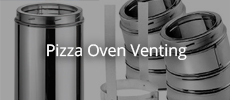Originally posted by broadrun96
View Post
Announcement
Collapse
No announcement yet.
CasaG90 Build in Houston
Collapse
X
-
My apologies broadrun, but you did request thoughts from us. Only trying to help.
- Likes 1
-
Which is why i asked in the thread for what the actual creator did with his. Not "expert" opinion about what they do outside of the manufacturer recs
Leave a comment:
-
I dont think a 10-1 vermiculite mix would compress ceramic fibre matting as the mix is a very lightweight in its self.
As David points out it can be done is several ways that all work just fine.
Personally I cant be bothered with vermiculite and I use 2 x 2” ceramic fibre blanket covered in several thin layers of fibre reinforced cement.
Leave a comment:
-
Would the vermiculite layer not also compress the insulation and the wire mesh, not chicken wire but the correct expanded mesh not distribute that load better? The purpose of the mesh is not to compress and be tight but rather be shaped at the insulation, yes that takes time but that's what I've seen for many projects of this and other designsOriginally posted by david s View PostThe manufacturers build instructions should be followed, but I abandoned the use of lathe or chickenwire years ago for three reasons. Firstly getting the stuff to conform to a compound curve is difficult and time consuming, especially over a small oven. Secondly, having a highly conductive material in the insulating layer is counterproductive. I use a 10:1 3/4” (35mm) thick vermicrete layer over the blanket and this is sufficient to hold the blanket in place as well as evening out the uneven surface and restoring the spherical form. Lastly any compression of the blanket, caused by tightening the lathe or chickenwire will reduce its insulating capacity. I prefer to use random mixed reinforcing fibres in the outer rendered shell for much the same reasons.
However, there are many ways to skin a cat and every method has its advantages and disadvantages.
Leave a comment:
-
That's exactly my problem with their descriptions, they show it screwed in to the dome on one thing and then screwed in to a base on another. I don't have a base under the dome except for the platform the oven will be built on. That would require screwing straight down and leave a screwhead where I would be either flaring out the stucco or a tile would be. They aren't exactly the most thorough with directionsOriginally posted by UtahBeehiverI would NOT drill and use tapcons on the actual dome, it will act as stress concentrator or possible point for cracks to start. If you notice on the FB video they drill into a concrete base not the oven.
Leave a comment:
-
From memory, I use 96 kg/m3 and there is a 128kg/m3, but being denser is a slightly poorer performer. Tightening the blanket reduces the amount of air in the volume thereby increasing density and reducing insulating capacity. As I said there are many ways to skin a cat with different preferred methods.Last edited by david s; 10-07-2021, 03:16 PM.
Leave a comment:
-
David, perhaps you have a different density of ceramic fibre where you live but the stuff I use is quite dense and not easily compressible, certainly adding wire over four inches of ceramic fibre wont have any effect in any way other than holding it to shape and keeping it in place!
Leave a comment:
-
The manufacturers build instructions should be followed, but I abandoned the use of lathe or chickenwire years ago for three reasons. Firstly getting the stuff to conform to a compound curve is difficult and time consuming, especially over a small oven. Secondly, having a highly conductive material in the insulating layer is counterproductive. I use a 10:1 3/4” (35mm) thick vermicrete layer over the blanket and this is sufficient to hold the blanket in place as well as evening out the uneven surface and restoring the spherical form. Lastly any compression of the blanket, caused by tightening the lathe or chickenwire will reduce its insulating capacity. I prefer to use random mixed reinforcing fibres in the outer rendered shell for much the same reasons.
However, there are many ways to skin a cat and every method has its advantages and disadvantages.
Leave a comment:
-
I helped a friend install a CasaG90 several years ago at their lake cabin. We laid sections of chicken wire underneath the rigid insulation board prior to setting the oven sections/cooking floor on the board. It was a little bit inconvenient having the loose wire sections there but put some cardboard on them until oven was assembled. Then we applied the ceramic blankets and simply brought the wire mesh sections up & over to hold the blankets in place and to provide some base for our outer stucco layers. Wire mesh was cut & secured with wire pieces to hold it in the dome shape prior to applying the layers of stucco.
I used tapcons into the base concrete slab (as Russell noted above) for my oven's outer fascade, but we didn't have an impact drill or the tapcons at the lake. Last edited by SableSprings; 10-07-2021, 08:49 AM.
Last edited by SableSprings; 10-07-2021, 08:49 AM.
Leave a comment:
-
About to start on my Casa90, oven on site but the hearth still curing. The lift of the pieces is making me pause, damn they're heavy.
How did you secure the lathe over the insulation? Looks like tapcon screws, are they just directly in to the material of the dome? I have a 6'6 hearth pour and working on setting the base foam and floor this weekend but want to make sure I'm setting it right for the lathe. Just going to do the insulate and stucco cover rather than a custom mix, unless there are thoughts from the experts?
Leave a comment:
-
Leo, You should download and review the free eplans from Forno Bravo. It will give you a good baseline on WFO ovens, design, and construction.
- Likes 1
Leave a comment:
-
This looks really nice. Good work man.
I just decided 4 days ago to build a pizza oven after watching it used in a cooking show. In planning stage but about to pull the trigger on a Casa90 soon. May hit you up in case I run into issues or need ideas.
Leave a comment:
-
Okay, it's done! Did a broken tile mosaic. If anyone needs more pics of the mosaic process, I've got a few. All I've got to do is seal the concrete countertop and bake some pies!
It's been a very hard, but really fun job. This thing is built like a tank, so I see myself and friends firing up a lot of food in this thing for years to come. (Well, of course till I want to build a bigger and better one.)
Learned a lot. There are a things I would do better next time. I would definitely look at spending more money on cosmetic work, but I am really proud to have taken on this project. Summer's over, now it's time to get back to teaching school!
If there are any suggestions of anything else I need. Let me know.4 Photos
- Likes 2
Leave a comment:





Leave a comment: